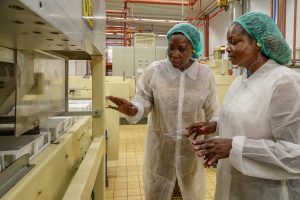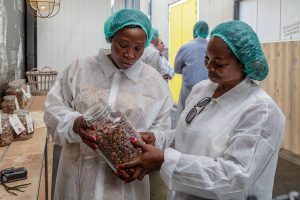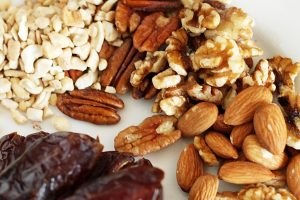Chocolate has journeyed through history, evolving from a sacred brew of ancient civilizations to a beloved global indulgence. Its rich legacy is intertwined with cultural, economic, and even political narratives, making it much more than just a sweet treat. The current standing of the chocolate industry is a reflection of centuries of cultivation, innovation, and adaptation. It’s a robust industry with a global value stretching into billions, yet it’s at a pivotal juncture as it navigates the waves of modern-day challenges and opportunities.
The canvas of consumer preferences is evolving with a growing emphasis on health-conscious choices, ethical sourcing, and a thirst for novel chocolate experiences. Moreover, global market dynamics are in flux with the emergence of new markets, the rise of artisanal chocolatiers, and a shift towards online retail. The industry is at the cusp of transformation, shaped by the interplay of these multifaceted consumer preferences and market dynamics.
Sustainable Cocoa Farming



The heart of chocolate lies in the humble cocoa bean, making the sustainability of its farming practices a cardinal aspect of the chocolate industry’s future. Sustainable cocoa farming transcends the mere act of cultivation; it’s about nurturing an ecosystem that’s beneficial for both the land and the livelihoods of the farmers. It’s the linchpin for ensuring a resilient supply chain capable of satiating the world’s burgeoning chocolate appetite while safeguarding the environment and the communities involved.
Several initiatives and technologies have emerged to champion this cause. Initiatives like the Rainforest Alliance and Fair Trade certification aim to promote environmentally friendly and socially responsible cocoa farming. Concurrently, technologies like precision agriculture, which encompasses data-driven farming practices, and the utilization of drones for monitoring and managing cocoa farms, are proving to be game-changers. These strides towards sustainable cocoa farming are not only fostering a greener industry but are also sowing the seeds for a more equitable chocolate future.
Ethical Sourcing and Fair Trade
As the curtain of consciousness lifts among consumers, the spotlight is now on ethical sourcing and fair trade practices within the chocolate industry. The ethos of ethical sourcing delves into the traceability and transparency of the supply chain, ensuring that every hand that nurtures the cocoa bean is treated fairly and respectfully. Fair trade practices, on the other hand, focus on providing equitable remuneration and working conditions for cocoa farmers, aligning the chocolate industry with broader global sustainability goals.
The impact of these practices is profound and wide-reaching. For producers, it heralds a shift towards better living conditions, fairer wages, and a dignified standing within the global supply chain. For consumers, it nurtures a deeper connection with the chocolate they savor, knowing that their indulgence is contributing towards a just and ethical chain of production. Moreover, it’s reshaping the industry’s image, transitioning it from a sector often mired in ethical controversies to one that stands as a beacon of responsible and sustainable practices. Through the lens of ethical sourcing and fair trade, the chocolate industry is not only satiating the global sweet tooth but is also contributing to a sweeter, fairer world.
Innovations in Chocolate Making



The realm of chocolate making is being continually enriched and expanded through a blend of technological advancements and culinary creativity. These innovations are not only refining the artistry of chocolate creation but are also enabling chocolatiers to venture into uncharted territories of flavors and textures.
- Precision Tempering Machines: These machines ensure chocolate is tempered to the exact temperature needed for that perfect gloss and snap.
- 3D Chocolate Printing: A modern marvel that’s enabling the creation of intricate chocolate structures, enhancing the visual appeal and the experiential facet of chocolate consumption.
- Aerating Technology: This technology introduces air bubbles into chocolate, creating a unique, light texture and a different mouthfeel.
- Novel Flavor Combinations:
- Exotic Spices and Herbs: The infusion of spices like saffron or herbs like lavender is creating a new realm of taste experiences.
- Savory Chocolate Combinations: The fusion of chocolate with ingredients like bacon or cheese, breaking the traditional sweet mold of chocolate.
- Fusion of Local Ingredients:
- Regional Fruits and Nuts: Incorporating local produce into chocolate not only creates unique flavors but also resonates with local tastes and cultural preferences.
- Local Liquors: Infusing chocolate with local or indigenous liquors, creating a dual experience of taste exploration.
Health-Conscious Chocolate Products
The echo of health consciousness is resonating across the food industry, and the chocolate sector is no exception. There’s a burgeoning portfolio of health-conscious chocolate products that cater to a growing segment of health-aware consumers.
- High-Cocoa Content Chocolates: Rich in antioxidants and lower in sugar, these chocolates cater to the health-conscious yet indulgent consumer.
- Sugar-Free Chocolates: Utilizing natural sweeteners like stevia or monk fruit, these chocolates offer a guilt-free indulgence.
- Integration of Superfoods:
- Chia Seeds, Quinoa, and Berries: The infusion of superfoods into chocolate not only enhances its nutritional profile but also introduces new textures and flavors.
- CBD-Infused Chocolates: Tapping into the wellness trend, CBD-infused chocolates offer a sense of relaxation and well-being.
- Other Health-Enhancing Ingredients:
- Probiotics: With the growing understanding of gut health, probiotic chocolates are carving a niche of their own.
- Vitamins and Minerals: Fortifying chocolate with essential vitamins and minerals to enhance its health quotient.
The trajectory of innovation in chocolate making is a testimony to the endless possibilities that lie within this cherished delicacy. From technological marvels to the fusion of health and taste, the future of chocolate is as exciting as it is delicious. The continual quest for healthier and more exotic chocolate experiences is steering the industry towards a horizon where indulgence meets wellness, where tradition melds with modernity, crafting a future that’s as sweet as it is exciting.
Chocolate Experiences and Niche Markets
In a world where exclusivity and unique experiences are highly prized, the chocolate industry is carving out spaces that transcend the ordinary. The emergence of premium chocolate experiences and niche markets is a testament to the evolving consumer palate and the desire for immersive chocolate encounters.
- Premium Chocolate Experiences:
- Bean-to-Bar Workshops: Offering a hands-on experience in chocolate making, taking enthusiasts on a journey from cacao bean to the finished chocolate bar.
- Gourmet Chocolate Tastings: Curated tasting sessions that explore a spectrum of flavors, origins, and chocolate-making styles.
- Niche Markets:
- Craft Chocolate: The rise of artisanal or craft chocolate makers who prioritize quality, ethical sourcing, and unique flavor profiles.
- Chocolate Subscriptions: Monthly curated selections of chocolates delivered to enthusiasts, offering a continual exploration of new flavors and brands.
- Chocolate Tourism:
- Chocolate Factory Tours: Offering a behind-the-scenes glimpse into the chocolate-making process, often accompanied by tastings.
- Chocolate-Themed Hotels and Resorts: An immersive experience extending from chocolate-infused spa treatments to chocolate tasting tours.
Online Retail and Direct-To-Consumer Models
The digital wave has not left the chocolate industry untouched. The shift towards online retail and direct-to-consumer models is redefining how consumers purchase and experience chocolate.
- Online Retail:
- Broader Selection: Online platforms offer a wider variety of chocolates, including rare and international brands.
- Subscription Services: Regular deliveries of curated chocolates, creating a continuous exploration journey for subscribers.
- Direct-To-Consumer Models:
- Personalized Experiences: Direct interaction between chocolatiers and consumers, enabling personalized selections and better service.
- Storytelling: Sharing the narrative of chocolate creation, from sourcing to crafting, enhancing the consumer’s appreciation and experience.
Conclusion
The road ahead for the chocolate industry is laden with promise yet bespeckled with challenges. It’s a landscape of contrast— traditional yet modern, indulgent yet health-conscious, global yet local. Adapting to the swiftly changing consumer preferences and global market dynamics isn’t merely about survival; it’s about thriving in a marketplace that’s as diverse as the cacao bean itself. The future beckons with the allure of innovation, the promise of sustainability, and the enduring love for this ancient yet continually evolving sweet delight. Through adaptability and a keen understanding of global trends, the chocolate industry is poised to continue its sweet sojourn, satiating the world’s chocolate cravings in a sustainable, innovative, and delightful manner.

